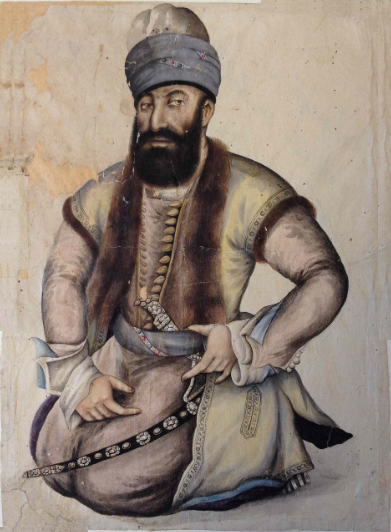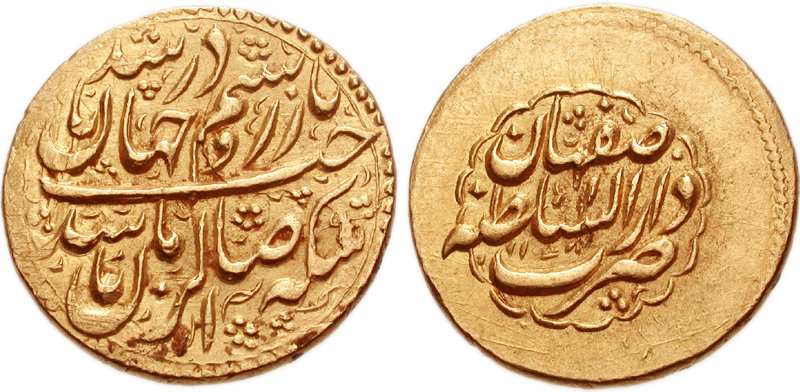|
Mohammad Sadiq (painter)
Muhammad Sadiq was a noted artist from 18th century Iran. He was a painter at the court of the Zand ruler Karim Khan (reigned 1750–79). After Karim Khan's death, he worked for the Qajar ruler Agha Mohammad Khan Qajar (reigned 1779–97). Portrait of Rustam Khan One of Sadiq's famous paintings is a portrait of Mohammad Rustam Khan Zand, a Zand prince and grandson of the military commander Zaki Khan. The painting is often praised for its classical Persian depiction of Male Masculinity. Gallery File:Court of Karim Khan.png, The royal court of Karim Khan Mohammad Karim Khan Zand ( fa, محمدکریم خان زند, Mohammad Karīm Khân-e Zand; ) was the founder of the Zand Dynasty, ruling from 1751 to 1779. He ruled all of Iran (Persia) except for Khorasan. He also ruled over some of the Cau ... painted by Mohammad Sadiq File:Karim Khan painting by Muhammad Sadiq.jpg, Portrait of Karim Khan File:A Portrait of an Amorus Couple by Muhammad Sadiq Zand Persia Dated AD 1787 ... [...More Info...] [...Related Items...] OR: [Wikipedia] [Google] [Baidu] |
Iran
Iran, officially the Islamic Republic of Iran, and also called Persia, is a country located in Western Asia. It is bordered by Iraq and Turkey to the west, by Azerbaijan and Armenia to the northwest, by the Caspian Sea and Turkmenistan to the north, by Afghanistan and Pakistan to the east, and by the Gulf of Oman and the Persian Gulf to the south. It covers an area of , making it the 17th-largest country. Iran has a population of 86 million, making it the 17th-most populous country in the world, and the second-largest in the Middle East. Its largest cities, in descending order, are the capital Tehran, Mashhad, Isfahan, Karaj, Shiraz, and Tabriz. The country is home to one of the world's oldest civilizations, beginning with the formation of the Elamite kingdoms in the fourth millennium BC. It was first unified by the Medes, an ancient Iranian people, in the seventh century BC, and reached its territorial height in the sixth century BC, when Cyrus the Great fo ... [...More Info...] [...Related Items...] OR: [Wikipedia] [Google] [Baidu] |
Zand Dynasty
The Zand dynasty ( fa, سلسله زندیه, ') was an Iranian dynasty, founded by Karim Khan Zand (1751–1779) that initially ruled southern and central Iran in the 18th century. It later quickly came to expand to include much of the rest of contemporary Iran (except for the provinces of Balochistan and Khorasan) as well as parts of Iraq. The lands of present-day Armenia, Azerbaijan, and Georgia were controlled by khanates which were de jure part of the Zand realm, but the region was de facto autonomous. The island of Bahrain was also held for the Zands by the autonomous Al-Mazkur sheikhdom of Bushire. The reign of its most important ruler, Karim Khan, was marked by prosperity and peace. With its capital at Shiraz, arts and architecture flourished under Karim Khan's reign, with some themes in architecture being revived from the nearby sites of the Achaemenid (550–330 BC) and Sasanian (224–651 AD) era's of pre-Islamic Iran. The tombs of the medieval Persian poets Hafez a ... [...More Info...] [...Related Items...] OR: [Wikipedia] [Google] [Baidu] |
Karim Khan
Mohammad Karim Khan Zand ( fa, محمدکریم خان زند, Mohammad Karīm Khân-e Zand; ) was the founder of the Zand Dynasty, ruling from 1751 to 1779. He ruled all of Iran (Name of Iran, Persia) except for Khorasan Province, Khorasan. He also ruled over some of the Caucasus, Caucasian lands and occupied Basra for some years. While Karim was ruler, Iran recovered from the devastation of 40 years of war, providing the war-ravaged country with a renewed sense of tranquillity, security, peace, and prosperity. The years from 1765 to Karim Khan's death in 1779, marked the zenith of Zand rule. During his reign, relations with United Kingdom, Britain were restored, and he allowed the East India Company to have a trading post in southern Iran. He made Shiraz, Iran, Shiraz his capital and ordered the construction of several architectural projects there. As noted by ''The Oxford Dictionary of Islam'', "Karim Khan Zand holds an enduring reputation as the most humane Iranian ruler of ... [...More Info...] [...Related Items...] OR: [Wikipedia] [Google] [Baidu] |
Qajar Dynasty
The Qajar dynasty (; fa, دودمان قاجار ', az, Qacarlar ) was an IranianAbbas Amanat, ''The Pivot of the Universe: Nasir Al-Din Shah Qajar and the Iranian Monarchy, 1831–1896'', I. B. Tauris, pp 2–3 royal dynasty of Turkic peoples, Turkic origin,Cyrus Ghani. ''Iran and the Rise of the Reza Shah: From Qajar Collapse to Pahlavi Power'', I. B. Tauris, 2000, , p. 1William Bayne Fisher. ''Cambridge History of Iran'', Cambridge University Press, 1993, p. 344, Dr Parviz Kambin, ''A History of the Iranian Plateau: Rise and Fall of an Empire'', Universe, 2011, p. 36online edition specifically from the Qajars (tribe), Qajar tribe, ruling over Qajar Iran, Iran from 1789 to 1925.Abbas Amanat, ''The Pivot of the Universe: Nasir Al-Din Shah Qajar and the Iranian Monarchy, 1831–1896'', I. B. Tauris, pp 2–3; "In the 126 years between the fall of the Safavid state in 1722 and the accession of Nasir al-Din Shah, the Qajars evolved from a shepherd-warrior tribe with strongholds in ... [...More Info...] [...Related Items...] OR: [Wikipedia] [Google] [Baidu] |
Agha Mohammad Khan Qajar
Agha Mohammad Khan Qajar ( fa, آقا محمد خان قاجار, translit=Âqâ Mohammad Xân-e Qâjâr; 14 March 1742 – 17 June 1797), also known by his regnal name of Agha Mohammad Shah (, ), was the founder of the Qajar dynasty of Iran, ruling from 1789 to 1797 as king (shah). Originally chieftain of the Quwanlu branch of the Qajar tribe, Agha Mohammad Khan was enthroned as the king of Iran in 1789, but was not officially crowned until March 1796, having deposed Lotf Ali Khan of the Zand dynasty in 1794. Agha Mohammad Khan Qajar was famously the eunuch Monarch, being castrated as a young adult upon his capture by Adel Shah Afshar, and hence was childless. He was assassinated on 17 June 1797, and was succeeded by his nephew, Fath-Ali Shah Qajar. Agha Mohammad Khan's reign is noted for the return of a centralized and unified Iran and for relocating the capital to Tehran, where it still stands today. He is also noted for his cruel and rapacious behavior, particularly during th ... [...More Info...] [...Related Items...] OR: [Wikipedia] [Google] [Baidu] |
Rustam Khan Zand
Muhammad Sadiq was a noted artist from 18th century Iran. He was a painter at the court of the Zand ruler Karim Khan (reigned 1750–79). After Karim Khan's death, he worked for the Qajar ruler Agha Mohammad Khan Qajar (reigned 1779–97). Portrait of Rustam Khan One of Sadiq's famous paintings is a portrait of Mohammad Rustam Khan Zand, a Zand prince and grandson of the military commander Zaki Khan. The painting is often praised for its classical Persian depiction of Male Masculinity. Gallery File:Court of Karim Khan.png, The royal court of Karim Khan Mohammad Karim Khan Zand ( fa, محمدکریم خان زند, Mohammad Karīm Khân-e Zand; ) was the founder of the Zand Dynasty, ruling from 1751 to 1779. He ruled all of Iran (Persia) except for Khorasan. He also ruled over some of the Cau ... painted by Mohammad Sadiq File:Karim Khan painting by Muhammad Sadiq.jpg, Portrait of Karim Khan File:A Portrait of an Amorus Couple by Muhammad Sadiq Zand Persia Dated AD 1787 ... [...More Info...] [...Related Items...] OR: [Wikipedia] [Google] [Baidu] |
Mohammad Rustam Khan Zand
Muhammad Sadiq was a noted artist from 18th century Iran. He was a painter at the court of the Zand ruler Karim Khan (reigned 1750–79). After Karim Khan's death, he worked for the Qajar ruler Agha Mohammad Khan Qajar (reigned 1779–97). Portrait of Rustam Khan One of Sadiq's famous paintings is a portrait of Mohammad Rustam Khan Zand, a Zand prince and grandson of the military commander Zaki Khan. The painting is often praised for its classical Persian depiction of Male Masculinity. Gallery File:Court of Karim Khan.png, The royal court of Karim Khan Mohammad Karim Khan Zand ( fa, محمدکریم خان زند, Mohammad Karīm Khân-e Zand; ) was the founder of the Zand Dynasty, ruling from 1751 to 1779. He ruled all of Iran (Name of Iran, Persia) except for Khorasan Province, Khorasan. He ... painted by Mohammad Sadiq File:Karim Khan painting by Muhammad Sadiq.jpg, Portrait of Karim Khan File:A Portrait of an Amorus Couple by Muhammad Sadiq Zand Persia Dated AD 1787 m ... [...More Info...] [...Related Items...] OR: [Wikipedia] [Google] [Baidu] |
Grandson
Family (from la, familia) is a Social group, group of people related either by consanguinity (by recognized birth) or Affinity (law), affinity (by marriage or other relationship). The purpose of the family is to maintain the well-being of its members and of society. Ideally, families offer predictability, structure, and safety as members mature and learn to participate in the community. Historically, most human societies use family as the primary locus of Attachment theory, attachment, nurturance, and socialization. Anthropologists classify most family organizations as Matrifocal family, matrifocal (a mother and her children), patrifocal (a father and his children), wikt:conjugal, conjugal (a wife, her husband, and children, also called the nuclear family), avuncular (a man, his sister, and her children), or Extended family, extended (in addition to parents and children, may include grandparents, aunts, uncles, or cousins). The field of genealogy aims to trace family lineages ... [...More Info...] [...Related Items...] OR: [Wikipedia] [Google] [Baidu] |
Zaki Khan
Zaki Khan Zand (died June 6, 1779) was an Iranian military commander and contender for the throne. A member of the Zand Dynasty of Iran, Zaki Khan, though he never became the ruler of Iran, managed to exert power over the country during the three months between the death of his half-brother Karim Khan, on March 2, 1779, and his own brutal death. Origins and early years Zaki Khan was born into the Zand tribe, who had been uprooted by Nader Shah from their ancestral lands near Hamadan, in the central Iranian region of Lorestan, and settled in Northern Khorasan. At Nader's death in 1747, the Zand returned to Lorestan, and their leader Karim Khan managed to gain vast political power, taking control of Isfahan in 1750, where they installed a puppet underage shah, Ismail III. Karim Khan never took the title of shah but had himself addressed as "wakil" (deputy) even as he was the ruler over most of Central and Western Iran. Zaki Khan was doubly related to Karim Khan: he was his first cou ... [...More Info...] [...Related Items...] OR: [Wikipedia] [Google] [Baidu] |
18th-century Iranian Painters
The 18th century lasted from January 1, 1701 ( MDCCI) to December 31, 1800 ( MDCCC). During the 18th century, elements of Enlightenment thinking culminated in the American, French, and Haitian Revolutions. During the century, slave trading and human trafficking expanded across the shores of the Atlantic, while declining in Russia, China, and Korea. Revolutions began to challenge the legitimacy of monarchical and aristocratic power structures, including the structures and beliefs that supported slavery. The Industrial Revolution began during mid-century, leading to radical changes in human society and the environment. Western historians have occasionally defined the 18th century otherwise for the purposes of their work. For example, the "short" 18th century may be defined as 1715–1789, denoting the period of time between the death of Louis XIV of France and the start of the French Revolution, with an emphasis on directly interconnected events. To historians who expan ... [...More Info...] [...Related Items...] OR: [Wikipedia] [Google] [Baidu] |





